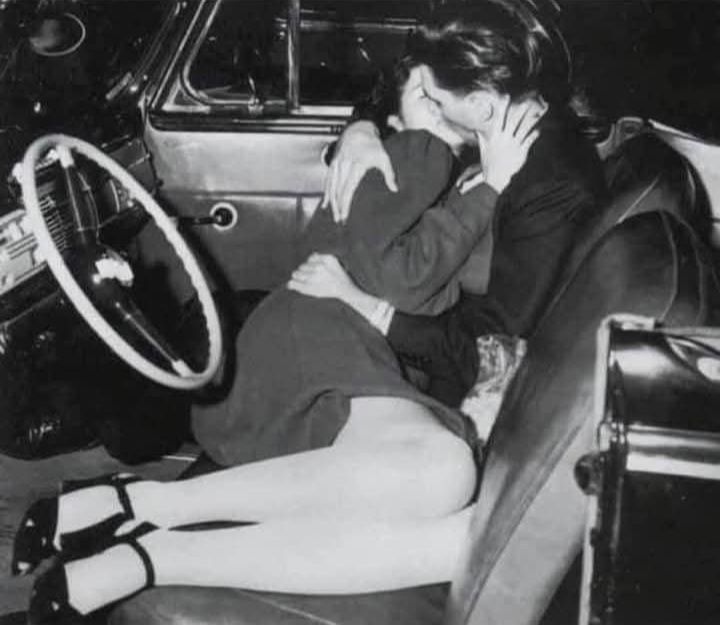This picture shows a couple sharing a moment on a front bench seat—a feature once common in American cars that symbolized closeness and simplicity. These seats allowed families and couples to sit together without barriers, a design slowly replaced by bucket seats and consoles.
Bench seats trace back to the early 1900s, inspired by carriage seating. Popular in cars like the Ford Model T and luxury brands, they remained standard through the ’30s to ’50s. The ’60s and ’70s were their golden era, with models like the Chevy Impala making them iconic. Their wide, uninterrupted design let three people sit comfortably, with no center console to block movement. Column shifters freed up floor space, and upholstery added comfort.

These seats were practical, fitting six passengers before strict seat belt laws. They were common in taxis, police cars, and trucks. The extra space made long drives easier.
Safety rules and changing preferences in the ’80s led to their decline. New seat belts and airbags required different designs. Buyers sought more personal comfort and sporty looks favored bucket seats. Center consoles became popular, pushing bench seats out.
By 2013, bench seats disappeared from most sedans, surviving mainly in pickup trucks and classic cars.
Though rare today, bench seats evoke nostalgia for simpler times when cars felt more personal. They remind us of family trips and cozy moments shared close together, a timeless part of automotive history.


